KG'S SPRING CREEK SCUD
As is often said regarding fly patterns, very little is original nowadays. This pattern is very similar to most scud-type flies being tied today, with perhaps the major difference being the use of Krystal Flash for the ribbing, as well as custom blended dubbing to match the colors of the natural scuds in my home-water spring creek. One of the challenges when tying flies that are fished sub-surface is that of getting the color of the dry dubbing blend correct so that when it gets wet the color change that occurs fits the true bug being imitated. I developed this pattern and the specific dubbing blends that I use for an olive and an amber color scud to match those naturals in the spring I frequent most during the summer season.

Materials:
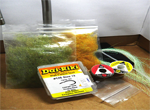
- Tying KG's Spring Creek Scud
- Recipe:
- Hook: DaiRiki 125 sizes 14-12
- Thread: UTC Ultra thread in size 70 or 140, Olive or Woodduck
- Dubbing: Blended synthetic and natural fibers to achieve blend that will be true to the natural bug when wet
- Tail: Small amount of same dubbing used for body
- Shellback: Plastic bag strip, cut to fit hook size (1/8" for size 12 hook)
- Rib: Pearl Krystal Flash
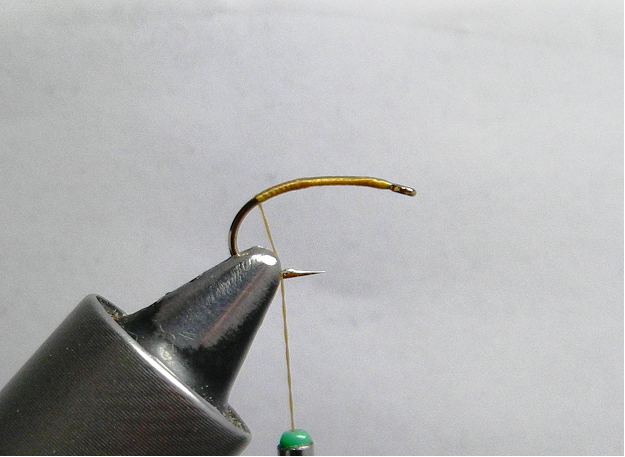
Step 1:
Secure hook in vise and start thread at eye and advance back to bend
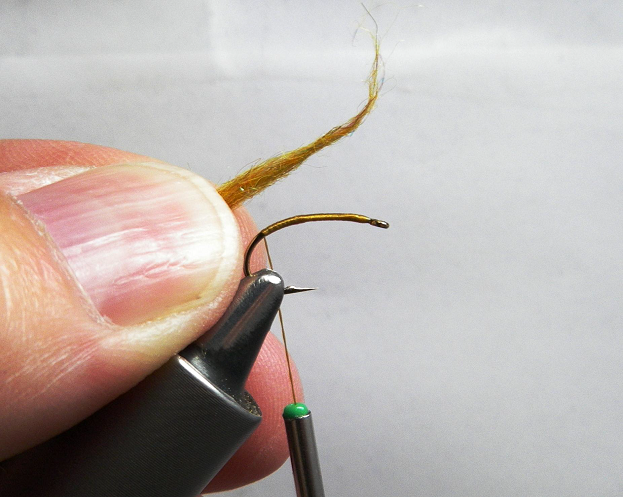
Step 2:
Take a small amount of dubbing and roll it in your fingers to form a 'rope' of dubbing – as shown
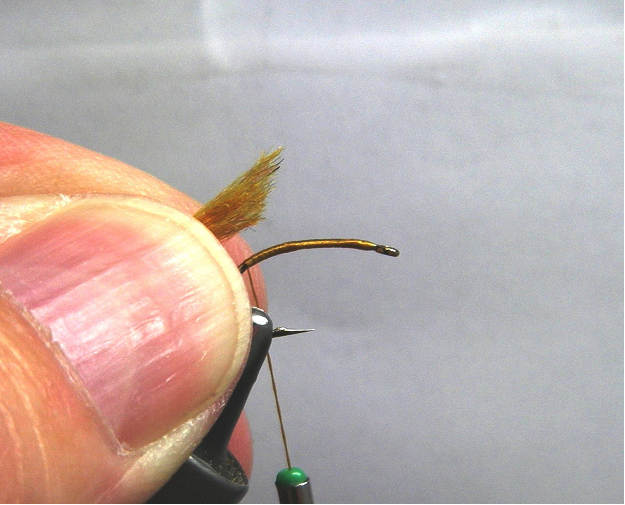
Step 3:
Trim the 'rope' at an angle – as shown
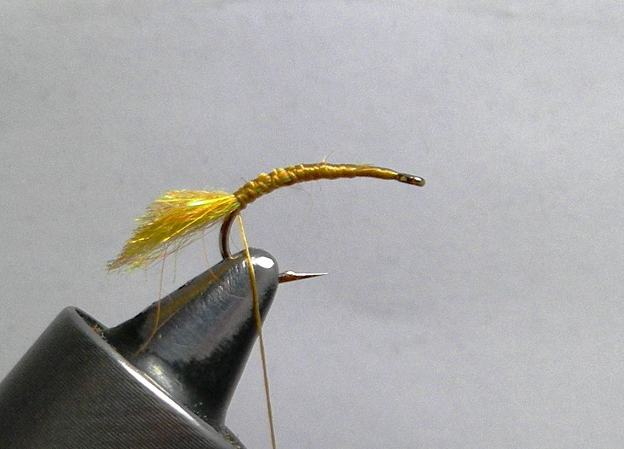
Step 4:
Tie in dubbing 'rope' tail, trim excess and then trim tail at an angle – as shown
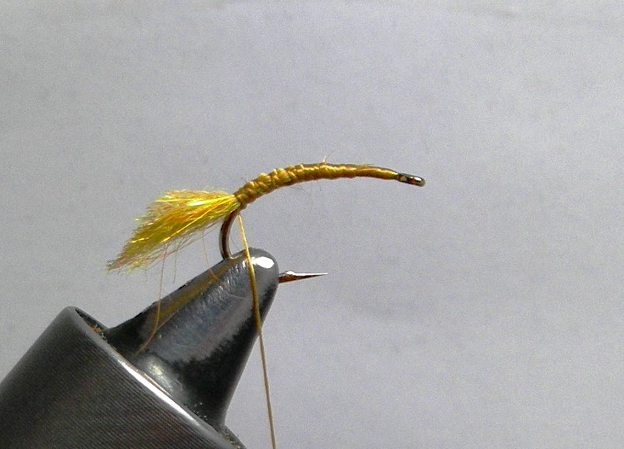
Step 5:
Trim plastic strip to a point and lay it over the hook. Bind down as shown with excess trailing over back of hook
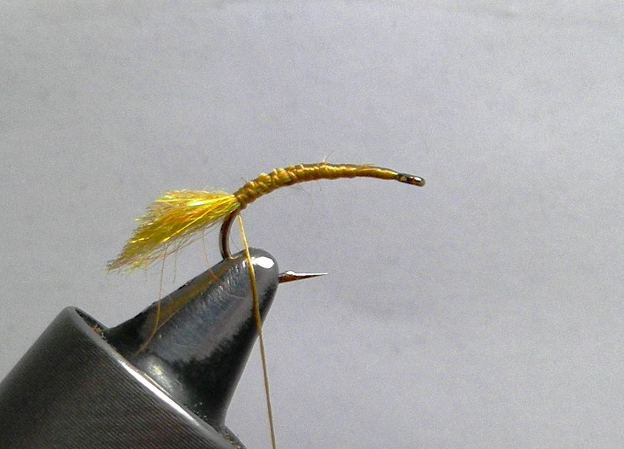
Step 6:
Tie in pearl Krystal Flash strand and bind down to approximately 1/16" from tail – as shown. This is critical to not bind down the ribbing material clear back to the tail as it allows for the plastic Krystal Flash material to get a bite on the plastic shellback material and not have the ability to slide off the back of the fly.
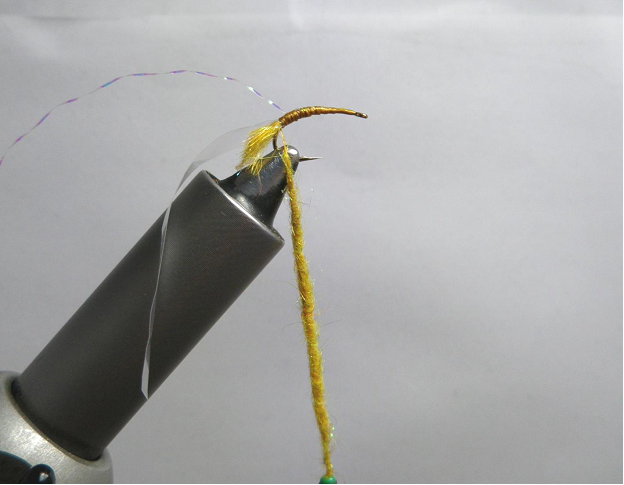
Step 7:
Apply dubbing material to tying thread with thread at the back of the hook. Tying tip: apply dubbing to your thread by rolling it counterclockwise, this prevents the material from unwinding as you wind the material on the hook (right-handed tiers).
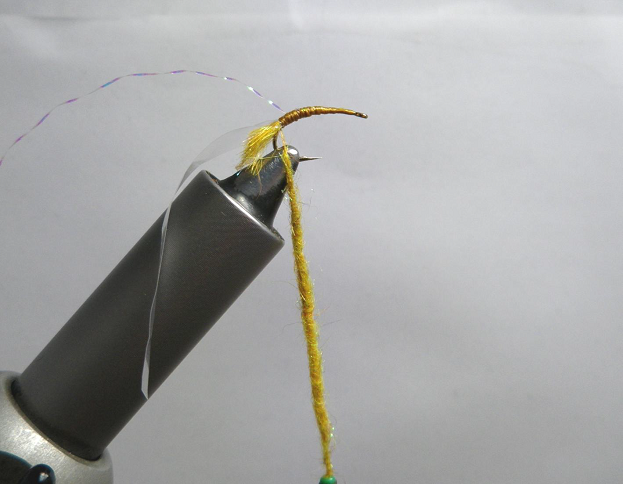
Step 8:
Wind dubbing onto hook, tapering as you go – as shown. Start with two wraps behind ribbing material to keep it positioned for correct ribbing after shellback has been secured in place (next step)
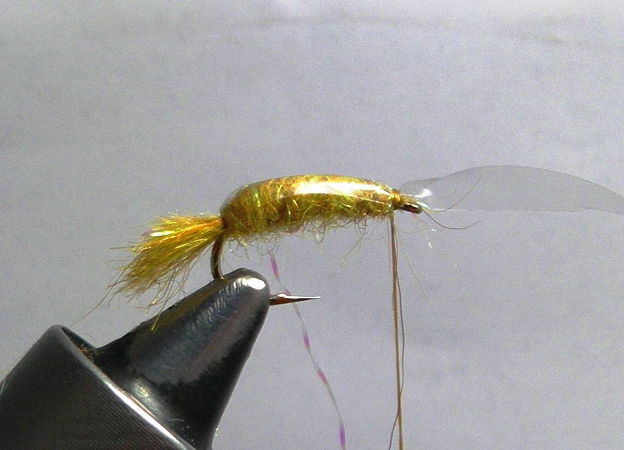
Step 9:
Pull plastic shellback over body of fly and secure at hook eye – as shown
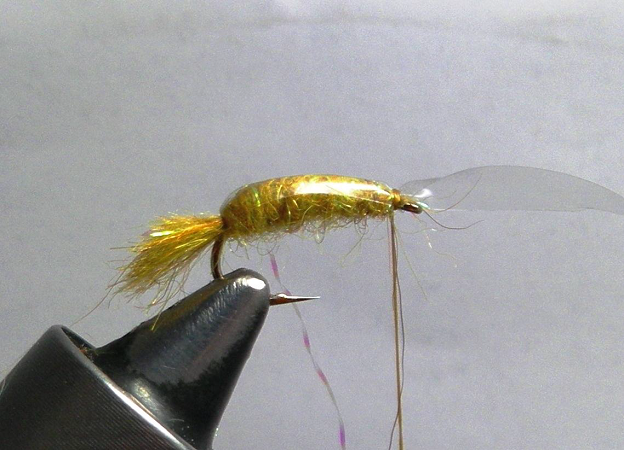
Step 10:
Rib fly with Krystal Flash material and tie off – as shown. Don't pull too hard on the ribbing material as it will stretch and ofttimes break. Trim excess ribbing and shellback materials. Tie off thread
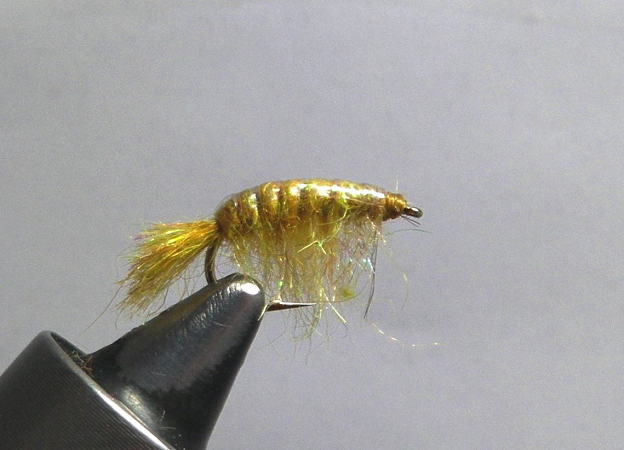
Step 11:
Using a bodkin, pick out material between ribbing segments. Be very cautious not to pick ribbing as it will break quite easily. Pick down both sides of the fly as well as down the middle of the bottom. I don't use dubbing brushes to pick out this fly as they tend to break the ribbing material.
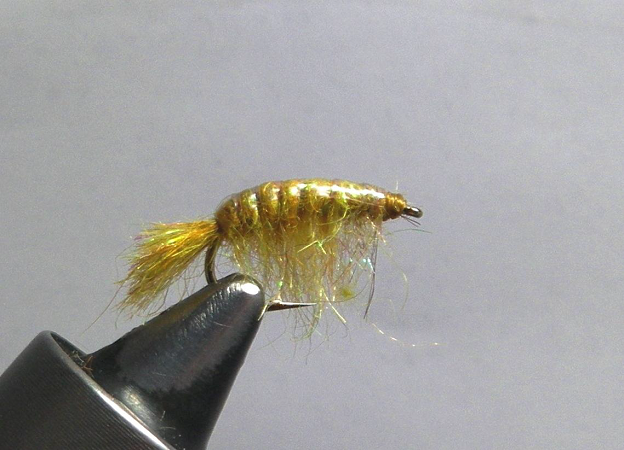
Step 12:
Lay scissors along the bottom of the hook point and trim fibers parallel with hook shank – as shown
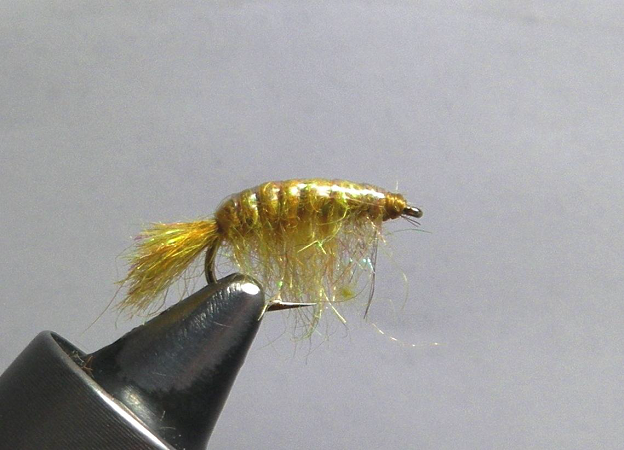
Finished Fly – Amber version
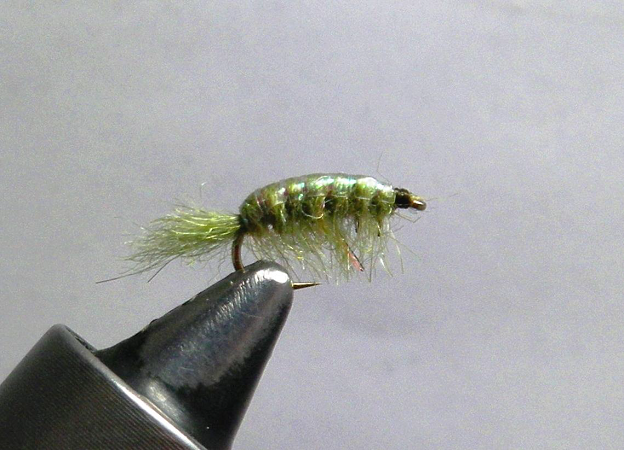
Finished Fly - Olive version
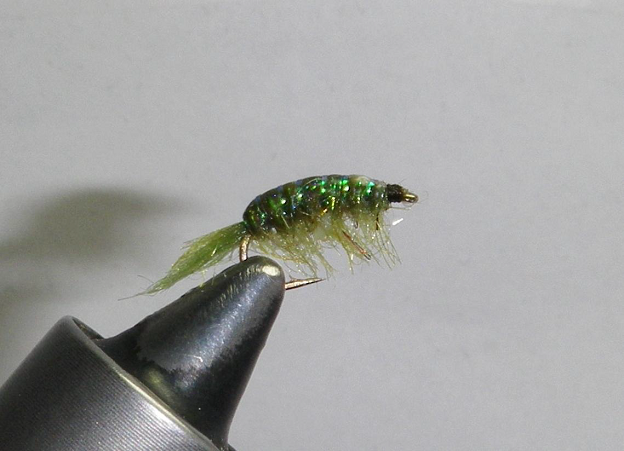
Olive version, wet. This shows why I use the Krystal Flash as a ribbing material. When wet this fly really does look like the real thing and the fish love it.
I don't usually weight this fly as I trail it behind a weighted nymph. I want this fly to just whisper over the tops of the weeds in my favorite spring creek, which is exactly where the fish are holding on most days. Often I will impart some very subtle action in order to give it some life and attract any cruising browns that may be in the area. This fly in both the olive and the amber are my most successful flies in any spring creek I have fished, so I rely on them as bread-and-butter on those types of waters.
Hope you have fun tying and fishing these flies and that they bring you great success. Don't be fooled by how fragile the ribbing material seems to be in the tying process. When fishing them, as well as when fish take them they are as durable as any flies I've ever used.
For more great info, check out:
Beginning Fly Tying | Intermediate Fly Tying | Advanced Fly Tying.
